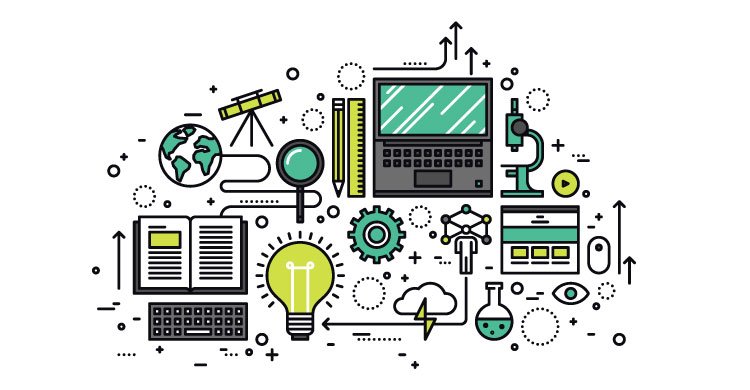Discover the Best Insurance Strategies to Fit Your Way Of Life and Budget plan
Discover the Best Insurance Strategies to Fit Your Way Of Life and Budget plan
Blog Article
Comprehensive Business Guides for Advancing Innovation Education in Schools and Colleges
The combination of modern technology education into school and university curricula has ended up being a critical vital in preparing trainees for an increasingly digital labor force. What particular approaches can be adopted to optimize their effect on both students and teachers?
Relevance of Technology Education And Learning
As innovation remains to progress at an unmatched speed, the relevance of technology education has become significantly apparent in today's culture. The assimilation of innovation into numerous elements of life demands that people possess a foundational understanding of technical ideas and applications. This expertise not only enhances employability yet likewise cultivates important reasoning and analytical abilities essential for navigating a vibrant workforce.
In universities, innovation education and learning furnishes pupils with the capability to adapt to rapid adjustments in industries driven by development. It motivates creativity and equips learners to involve with emerging technologies, from artificial knowledge to data analytics. Technology education and learning promotes digital literacy, which is critical in a period where info is readily offered yet commonly misleading.

Trick Parts of Effective Guides
Effective overviews for innovation education and learning have to encompass numerous key components to guarantee that students acquire one of the most from their experiences. A well-defined curriculum is vital, detailing the goals, learning outcomes, and the skills to be developed. This educational program must be frequently updated to mirror the quickly progressing technical landscape, ensuring significance and applicability.
Second, comprehensive sources that consist of books, online products, and hands-on devices are important. These sources ought to be varied and obtainable, providing to numerous finding out preferences and styles. Furthermore, integrating real-world situations and study can enhance understanding and involvement.
Third, evaluation strategies must be consisted of to evaluate learner development successfully. These analyses ought to be differed, including developmental and summative assessments that line up with the knowing goals.
Moreover, professional development opportunities for educators are vital. Educating workshops and programs can gear up instructors with the most recent technological improvements and instructional methods.
Finally, cultivating a joint knowing setting urges peer interaction and expertise sharing. By including these essential parts, overviews for innovation education and learning can dramatically improve the understanding experience, preparing trainees for future difficulties in a progressively electronic globe.
Structure Market Collaborations
Building strong industry partnerships is a crucial aspect of boosting technology education and learning. These partnerships between universities and organizations produce a dynamic community that benefits teachers, companies, and trainees alike. By cultivating partnerships with market leaders, colleges and colleges can straighten their curricula with the advancing needs of the job market, guaranteeing that pupils obtain relevant abilities and expertise.
The development of internships, apprenticeships, and mentorship programs works as a keystone of these partnerships. Such opportunities give students with hands-on experience, improving their employability and functional understanding of modern technology applications. In addition, industry partners can use insights right into arising fads and technological innovations, enabling instructors to adjust their mentor methods as necessary.
In addition, collaborations can facilitate access to sources, such as devices, software program, and funding for study tasks. These payments improve the discovering environment and make it possible for institutions to stay at the forefront of technical innovation. Eventually, constructing durable industry partnerships is necessary for growing a proficient workforce that meets the requirements of today's quickly changing technical landscape, while additionally driving economic growth and competitiveness in the more comprehensive neighborhood.
Implementing Innovation Programs
Carrying out innovation programs within universities needs a tactical strategy that prioritizes both curriculum advancement and resource allowance. To start successful technology assimilation, establishments should first assess his explanation their existing facilities and determine gaps in sources, consisting of hardware, software application, and personnel training. This analysis enables colleges and institutions to develop a tailored strategy that lines up with their particular instructional objectives.
Next, it is important to establish an extensive curriculum that includes emerging modern technologies and sector criteria. Collaborating with educators, market professionals, and stakeholders can ensure that the educational program stays relevant and efficient in preparing trainees for the labor force (Insurance). In addition, expert advancement for professors is essential, as it furnishes instructors with the skills necessary to successfully educate new modern technologies
Moreover, establishments should emphasize the value of hands-on learning experiences, such as workshops and laboratories, that enable trainees to apply theoretical knowledge in practical setups. This experiential strategy improves engagement and fosters crucial thinking. Ultimately, protecting sustainable financing with collaborations and gives can aid preserve and broaden innovation programs, guaranteeing long-term success and versatility in an ever-evolving technical landscape.
Gauging Success and Outcomes
Evaluating the success and end results of modern technology education and learning programs is necessary for validating their impact and leading future enhancements. Learn More Reliable dimension frameworks must encompass both measurable and qualitative metrics, supplying an extensive view of program efficacy. Trick performance indications (KPIs) such as trainee enrollment numbers, retention prices, and course conclusion portions provide important quantitative data.

Incorporating standard analyses can even more assess pupils' technical proficiencies and preparedness for the labor force. Benchmarking versus similar institutions enables contextually pertinent comparisons, highlighting locations for growth.
Ultimately, the continuous analysis of modern technology education programs promotes a society of improvement, guaranteeing that they develop abreast with market needs and instructional standards. By methodically gauging success, establishments can not just demonstrate liability to stakeholders however also boost their offerings, thereby enhancing the learning experience and preparing pupils for the ever-changing technological landscape.
Verdict

The integration of innovation education and learning right into college and college curricula has come to be an essential necessary in preparing pupils for a progressively digital labor force.As innovation continues to advance at an extraordinary speed, the relevance of technology education has ended up being significantly noticeable in today's culture.In academic institutions, technology education furnishes trainees with the ability to adapt to quick changes in markets driven by technology. By prioritizing technology education, organizations can grow a look at this now generation of notified people capable of leveraging technology for societal and personal improvement. The execution of robust assessment strategies enables institutions to measure success and results, ultimately enhancing the total effectiveness of modern technology education and learning efforts and preparing students for future challenges.
Report this page